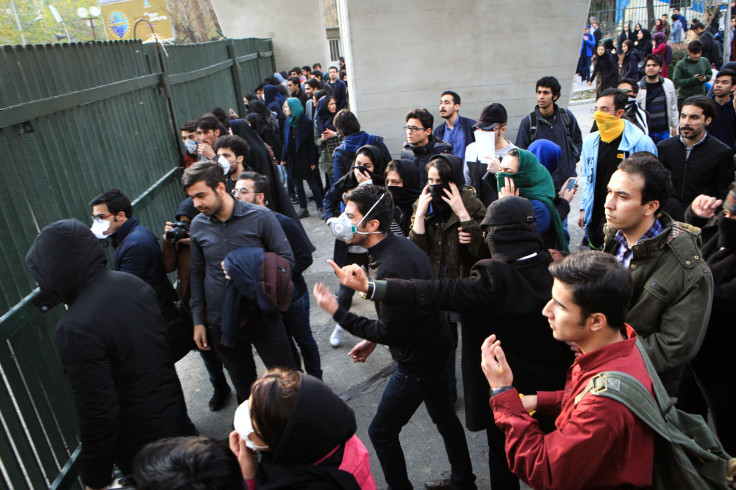Why Are There Protests In Iran? Answers To 3 Important Questions About The Latest Demonstrations

Ten people died on Sunday night in Iran, raising the death toll to 12, as demonstrators continue their most fervent anti-government protests since 2009. The deaths and arrests have spread outside the capital of Tehran, with six deaths reported in the city of Tuyserkan, two in the city of Dorud, two in the city of Izeh, and two in Lorestan province, Iranian state television and other media reported Monday.
There were 200 arrests in Tehran on Saturday night and 400 total arrests in Iran since Thursday, according to reports.
The protests are the largest since the Green Movement in 2009, which disputed the presidential election of Mahmoud Ahmadinejad and shut down the government. Ahmadinejad remained in power until 2013, and the Green Movement lasted just a few months and resulted in roughly 30 dead and thousands of arrests in the largest uprising since the 1979 Islamic Revolution.
Why Are Iranians Protesting?
Like most protest movements, the motives change and take on broader concerns. The mostly spontaneous protests were sparked by surging living costs like the price of eggs and poultry, as well as an economy that has struggled for roughly a decade. A BBC investigation found "that on average Iranians have become 15 percent poorer in the past 10 years."
But the protests have also morphed into calls for regime change amid alleged government corruption. In Mashhad, Iran's second-largest city, the protests were directed at President Hassan Rouhani, while some protesters in Tehran chanted "death to Rouhani." Many have also chanted “death of the dictator” in reference to Supreme Leader Ayatollah Ali Khamenei. As an Islamic state, it is considered particularly blasphemous to criticize the supreme ruler.
Other chants have included, “Bullets, tanks, and Basijis are no longer effective,” as well as “referendum, referendum, this is the people’s slogan."
Some protesters called for the return of the monarchy and the former shah's son, Reza Pahlavi, who has lived in exile in the United States since the late 1970s. Pahlavi has been active on Twitter in recent days in support of the protests.
The failure of theocratic tyranny in #Iran:
— Reza Pahlavi (@PahlaviReza) December 31, 2017
- The second highest rate of executions in the world
- Billions spent meddling in Syria, Lebanon, Iraq and Yemen
- The disappearance of our beloved Lake Urmia & the desertification of many provinces
- Record high unemployment
Who Is Protesting And Where?
Protests have remained confined to relatively small pockets in at least a dozen cities, with mostly young men and male students on the streets. According to some reports, the protestors are armed and have tried taking over police stations and military bases. There is no leader of the protests.
The demonstrations have sparked counter-protestors and pro-government rallies. But some of the pro-government demonstrations had been pre-planned to celebrate the demise of the Green Movement on its anniversary.
What's Being Done To Contain The Protests?
The unrest has persisted despite Sunday's appeal for calm by Rouhani, who has downplayed the protests. Rouhani called the protests an "opportunity, not a threat," and has defended Iranians' right to protest. However, he has also stated there will be a crackdown on lawbreakers.
Iran's Revolutionary Guards Corps has warned anti-government demonstrators that they will face the nation's "iron fist" should the protests continue.
The government has already blocked access to Instagram and the popular messaging app Telegram. Social media has been a tool to coordinate and discuss the protests.
The U.S. government has supported the anti-government protesters. President Donald Trump posted on Twitter that "the good people of Iran want change, and, other than the vast military power of the United States, that Iran’s people are what their leaders fear the most."
"The Iranian government is being tested by its own citizens. We pray that freedom and human rights will carry the day," U.S. Ambassador to the United Nations Nikki Haley said Sunday in a statement.
© Copyright IBTimes 2025. All rights reserved.






















